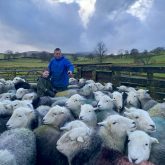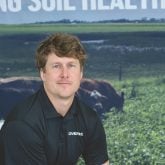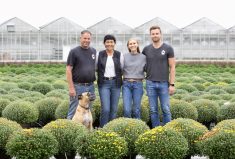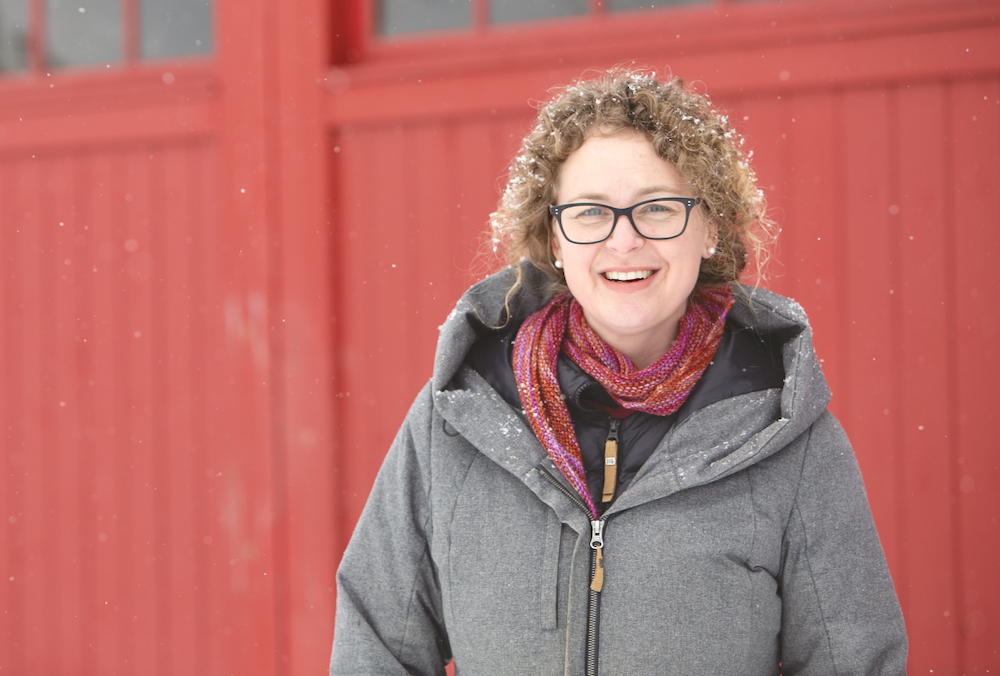When James and Josée Morin decided to move from the city of Sudbury to the country in 2012, little did they know that by 2021, they’d be committed to the farm as a thriving business.
It wasn’t in the plan. “We were just looking to get out of the city, get some land and put in a vegetable garden for our own use,” admits James Morin, who has four children ranging in age from 12 to 26.
Morin has adopted regenerative agriculture principles for Kipling Ridge, his 160-acre operation near Verner in northern Ontario. That means he raises his cattle, pigs, turkeys and chickens on pasture. He uses no herbicides, pesticides or fertilizers. He also buys hay for feed direct from two local farmers and adds in barley and pea supplements when they’re needed.
Read Also

What to consider when setting up farm-related business ventures
Things to consider before launching a farm-adjacent side business.
But that is only part of what makes Morin’s farm unique in the area. The other part is his financial background. He holds a masters in business administration, and has been employed in commercial banking for a number of years and still works full-time on contract with Concentra, a lending and investment company based in Saskatchewan.
“We’ve paid close attention to our costs of production and how that translates for prices, for example,” he says. “Using (regenerative) techniques, we’re offsetting our feed costs for the cattle especially, because we’re maxed out on our land base which limits the number of cows we can run.”
Regenerative agriculture is trending hot these days, with farmers the world over taking up the cause and large companies like General Mills and Danone getting on board to incentivize suppliers to adopt methods that not only sustain the environment but give back to it.
While there are many different definitions of this production method, it usually encompasses a holistic approach and its principles include: reducing or eliminating tillage; protecting the soil (e.g live roots in the ground); incorporating biodiversity (e.g. different livestock species, cover crops and rotating crops); and integrating livestock with cropping. Taking care of water — both in terms of quantity and quality — is also important. Some, like General Mills, add in components like farmer economic resilience.
“We’re in a very interesting space in this trend, with large operations using regenerative techniques to save money on fertilizers, so there’s a clear ROI right there,” Morin says.
“For us, we bought a place where the hay was taken off for a good 40 years — so there were really degraded pastures and it was very weedy.”
Using regenerative methods — and especially using rotational grazing — he says he has turned unproductive land into land that’s flush with all kinds of different grasses and clovers that weren’t there before.
Banking and farming
Morin says that becoming a farmer has made him a better banker.
“They (bankers) really have no concept of the stress, the risk, how important the business is to them (farmers) — not just professionally but personally,” he says.
Juggling both the farm and the full-time career meant that he took a job with Concentra in December 2020 where he found the sweet spot of flexible work hours and good compensation.
“I have a home office on the farm, so if something comes up that I have to deal with right away I can,” he says.
What he likes about the regenerative approach is that it’s a way to experiment with different methods without having to invest a ton of money in infrastructure.
“If you put up a hog or poultry barn, you’re committed,” he says, adding that he’s not knocking anyone who does, he’s just going about it in a different way.

Starting up
Living in Sudbury, the Morins had a 20′ by 50′ yard that they filled with a robust vegetable garden. But it wasn’t enough — James and Josée talked it over and wanted to do more — which is when the idea of the farm arose.
“We weren’t from farming at all. I was born and raised in a mining community and my wife is from a logging community,” he says.
The first and second summers were a continuation of the gardens and the livestock followed.
“We were basically homesteading,” he says. “I was involved in organizations locally that supported buying local, and opportunities opened up to work with other farmers on co-marketing.”
“It really just snowballed and we haven’t been able to keep up since,” he adds.
In terms of startup, he obtained a regular mortgage like anyone else — at a staff interest rate, since he was working at the local credit union at the time. His wife was and continues to work full-time as a teacher.
The farm officially got underway in 2015, and he stepped away from his financial career in 2017-18 to go full-time into farming with the intent of making Kipling Ridge into a going concern.
“It was extremely difficult on our cash-flow,” he says, reiterating the lessons he learned about how big a burden the financial side of the business is on farmers.
He realizes his situation isn’t unique — many farmers are full-time employees off-farm, as well.
In 2018, he applied to the Canadian Agricultural Loans Act (CALA) program for a 10-year loan to buy equipment and re-finance his mortgage. CALA is a federal loan guarantee program in which the government will compensate the lender 95 per cent of their loss due to a default on an eligible loan. The loan limit is $500,000 per farm.
He also has an operating line of credit based on equipment for which he paid cash, as well as his livestock.
The farm and meat sales
Morin characterizes his farm as small scale, with 30 head of Dexter and Dexter-Angus cross cattle and 120 pigs — Large Black hogs and Kune Kune pigs — at any given time year round. In the spring and summer, he also raises 50 turkeys and about 1,500 chickens. He takes the pigs and cattle from breeding right to slaughter, and he’s looking to double the number of pigs this year.
Calving and farrowing happens out on the land or in the forest, and the animals have generally acclimated to the weather.
He uses a pasture-based, multi-species rotational grazing system, and runs the cattle to keep the pasture at a lower level so it’s better for the hogs and chickens.
“We’re raising three different kinds of livestock — it’s like stacking,” he says.
He sells the meat through two streams: whole hogs into an online farmers market aggregator with 25 vendors, and half or whole animals direct-to-consumer.
The aggregator takes whole animals — branded under the Kipling Ridge banner — and has them processed to specifications dictated by what customers are buying. They also take care of all sales, invoicing and customer service.
He sends his other animals to two local provincially licensed abattoirs — one for the cattle and pigs and one for the birds.
The COVID-19 effect
Demand for meat produced the way he produces it spiked during the pandemic.
“It was just remarkable — by the end of April last year, our 20-foot walk-in freezer was emptied and we had deposits on everything we’re raising to the end of June 2021,” he says.
Usually, he’d be taking deposits for hog meat three months out, and sometimes six months for the cattle — which he only sells in the spring and fall.
“We flipped from having animals on the ground that weren’t sold yet to having deposits on hogs coming from sows that weren’t even bred yet,” he says.
He says almost all the farmers he knows who took this approach — who have their animals on pasture and treat them well — had the same kind of demand over the past year.
The huge demand also caused some headaches when it came to explaining to would-be customers that he couldn’t supply for a year.
“It complicated the customer-service side of the business,” he says. “A lot of folks think livestock farmers are like the grocery store.”
Another factor that complicates the relationship is that customers don’t really know what the bottom-line price will be when they make a deposit.
Morin had to raise his prices twice — partly because of rising feed costs. He does an annual check-in with his numbers to ensure he’s making money.
Fortunately, he has a regular, loyal customer base — especially those who buy whole or half animals from him.
He was still getting weekly calls from people who wanted to get meat immediately in March 2021.
What about regen farming?
Morin is keen on keeping up with the trends and regularly promotes the regenerative movement. He says that now, most regenerative agriculture farms are small and mixed — fruits and veggies and grains or, like him, mixed livestock.
“As they get larger, there tends to be more specialization — large grain and cattle farms, for example,” he says. “We’re seeing it evolve — in the States, especially, there are folks putting 300, 400 or 500 pigs on pasture, which is remarkable, and they’re doing really well.”

Many of them are acting as suppliers to smaller mixed farms — who want to raise just 20 or 30 hogs.
“There are so many different ways to put a business model together in this,” he says.
While he has nothing against the bigger, efficient operations, he thinks there should be more small farms and abattoirs — to boost local economies and to build resilience in the supply chain.
“We’ll always need the larger farms — to supply the kind of volume that’s needed in, say, fast-food chain restaurants,” he says. “We can’t compete for price on that level.”
He says that using regenerative agriculture is “not a linear thing,” and that there is a period of transition — especially if the farm has been traditionally run.
It takes time, and the approaches are different for nearly every farm — depending on soil type, weather, geography and a whole host of other factors.
Morin has noticed that a lot of the farmers who have been in regenerative agriculture have become vertical integrators. For his own business, when he wanted to scale up he had to make a decision to either increase his land base and grow his own feed, or expand at the other end of the chain and build or buy an abattoir.
“When you spend all this time and care to raise these animals in a certain way, you want to be sure that the slaughter process and getting to the final product uses those same ideals all the way through,” he says.
From the front end, one of his hay suppliers has also offered to allow Morin’s livestock to graze his crop residues.
“Little steps like that could help me double my herd — with free access to his land,” he says. “During difficult times of the year, it’s great to have that — and he gets free fertilizer, saving him some money.”
He’s also keenly interested in figuring out better approaches to financing the restructuring and expansion of regenerative farms.
“On the business side, what we really need to see is some innovation in financing,” he says, especially to bridge the gap that occurs when farms are going through the transition phase from conventional to regenerative, and revenues are scarce.
“There are a lot of financial companies around the world working to address that — a lot of it has an equity component,” he says.
He’s a fan of Area One Farms, which has an innovative model for helping farmers scale up their businesses. Founder and CEO Joelle Faulkner put together the private equity fund about 10 years ago.
“What they’re doing is game changing,” Morin says.
Basically, Area One Farms connects willing investors with established farmers who want to expand but not take on debt and interest payments, fees or rent.
Between 2012, when the company was founded, and March 2021, it had $450 million in assets under management on 20 properties in four provinces across Canada, and is moving more and more into investing in regenerative agriculture as a risk reduction method. Faulkner’s idea is that consumer preferences will drive a lot of change on the farm, especially demanding lower inputs. So she has decided to turn her sights — and investors — onto regenerative.
Kipling Ridge — next steps
Morin managed to build a good relationship with his two abattoir owners, although booking slaughter times has been a bit tricky.

“We have to look six to 12 months out,” he says, noting that planning is huge part of the operation and when there are X number of piglets and weans on the ground. Meat processing is one of his biggest costs, along with feed.
To get some regularity for slaughtering his animals and reduce costs, he even planned to build an abattoir. He had priced it out and was ready to go when he advised the abattoir owner he currently deals with of his intentions.
To his surprise, the owner offered to sell his business — which worked out well, since it’s only 15 minutes from the farm, is already provincially licensed and has a well-trained staff of six full-time and three to four part-time employees. It also has an established customer base.
Creative Meats slaughters every species except poultry and has an on-site retail butcher shop. It does custom work for the local farmers, and also brings in sides from packers. The facility has been around for about 50 years and has the capacity to slaughter 20 cattle or 35 hogs a week. Right now there’s only one kill day — a limitation dictated by having enough cooler space.
“The intention is grow the farm to the extent that it can supply the retail shop,” he says. “But it takes time — we need to get to a scale where we can finish animals at least every month on the cattle side.” He’d like the business to get to 10 times its current size — including more farms.
Describing how he manages a full-time financial career while being a full-time farmer, Morin says he’s learned how to use his time efficiently, and, because he’s passionate about it, he genuinely enjoys farming.
“I get relaxation and joy out of the farming,” he says.
“I don’t want to send the message that it’s absolutely necessary if your farm is designed and operated properly. Josée and I both love our professional careers as much as the farming.
“Of course, the extra income does help smooth out cash flow, and our operation is profitable — but my wife and I have made the choice to have certain luxuries and are happy to continue working to afford that.”
Those extras include equipment that, says Morin, “isn’t exactly necessary, but we like having it around as we develop our property. Our tractor and related implements are basically new, and we also have a five-year-old 9-tonne excavator.”
And there are strategic considerations too. The couple are in their mid-40s and have a clear business objective: “to pay off all of our financing within 10 years so that a transition to our children doesn’t come with any financial burdens.”
“We all have the same 168 hours in a week, and if you take 68 off for sleeping and personal care, and another 40-50 for your career, it still leaves us with at least 50 hours to devote to other endeavours. How that time is spent has a significant impact on your lot in life — we’ve chosen to build a regenerative farming enterprise with ours.”















